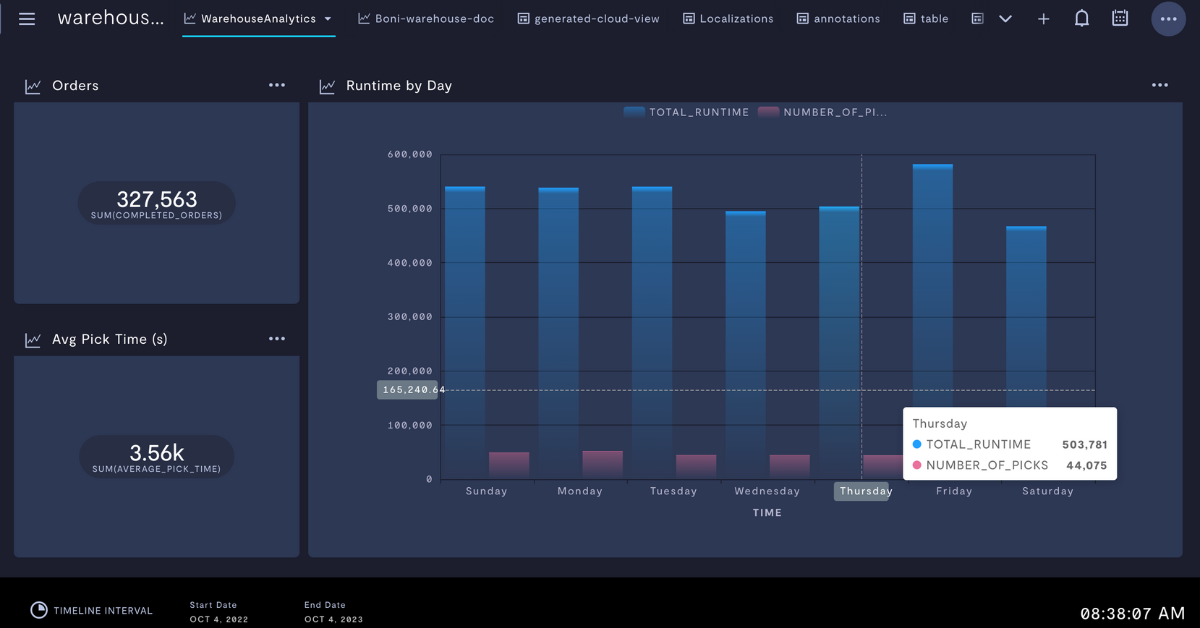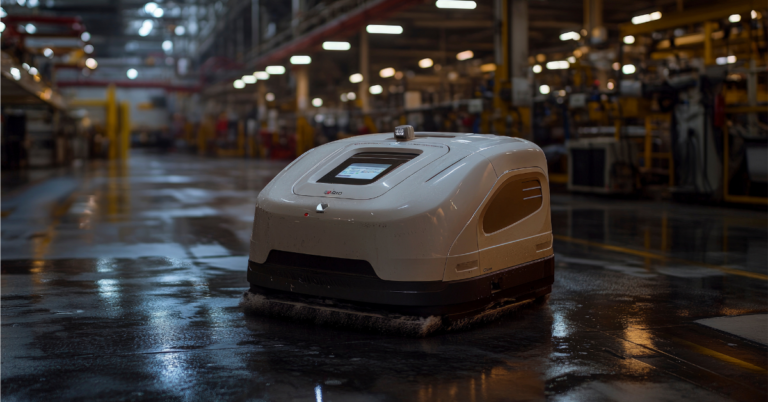For robotics companies across all industries, robot data is at the heart of operations and strategy in every department- especially when operating at scale.
Between sensors, cameras, and other systems, robots ingest so much data that prioritizing which data to keep and which groups need access can feel like a monumental challenge. But how can you do so when new data pours in every minute?
Distributing the right robot data to various roles is hardly a job one can do on their own. You’ll need a robust robot platform to support your efforts and help sort the data based on priority. You may build one internally or utilize a third-party option, like Formant. Still, you’ll first need to grasp how every department utilizes data to understand proper distribution and build a solid robot data strategy.
Of course, you’ll first need to speak with each department about their data needs, as each company is unique. To get you started, below are a few overhead examples.
Engineers
Engineers are the backbone of any robotics company; they are consistently working to build and improve the robot’s hardware and systems to ensure everything is performing optimally. To help them make sure robotic fleets continuously perform as best as possible, engineers need easy and quick access to all relevant data.
- Operational Logs: Operational logs capture a history of a robot’s actions, interactions, and system behavior. Throughout the development stages, engineers can use this data to track the robot’s movements, tasks performed, and any anomalies or errors encountered during operation to anticipate issues in the real world. Operational logs are valuable for diagnosing issues, identifying behavior patterns, and optimizing a robot’s performance and reliability.
- Raw Data: Engineers often require access to raw sensor data for debugging and understanding how to improve robot performance. This unprocessed, granular data gives engineers a comprehensive view of the robot’s sensory inputs, allowing for in-depth analysis and problem-solving.
- Real-time Monitoring: Real-time monitoring is an indispensable tool for robot engineers, providing them with a live window into the inner workings of robotic systems. Engineers benefit from real-time monitoring dashboards that display performance metrics. These dashboards help them identify issues promptly and fine-tune algorithms or support future iterative improvements.
Robot Operators
Robot operators are responsible for the day-to-day function of the robots: they monitor the fleet, respond to issues, and ensure that robots complete their missions. Real-time data is critical for operators to detect an error or step in as soon as possible should a robot experience a spill, but it can be challenging to sort through if not prioritized correctly.
- Monitoring: Once a robot is deployed, it must be continuously monitored to ensure the mission is completed quickly and correctly. Even if the mission is simple, operators need access to systems including battery level, temperature, and overall health of the robot so it doesn’t get damaged.
- Error Detection: Of course, it’s everyone’s wish that all missions run smoothly, but errors happen, no matter how much you prepare. From minor errors in logic to a spill that tips the robot over, error detection is key data that operators need to ensure the mission stays on track and provide early intervention if needed.
- Performance: There’s always room for improvement in efficiency. To optimize robotic systems, real-time performance metrics and historical data can help to track productivity over time, providing valuable insight that can help your team test how to improve systems.
Tech Support
Tech support plays a pivotal role in addressing issues and ensuring the smooth operation of a fleet. When robots are deployed across multiple environments and fleets scale, tech support is a critical function, as customers will need swift action should an issue arise. Without the proper data, support tickets could pile up and cost you customers in the end.
- Remote Diagnostics: For most robotics companies, fleets operate in various places across the country or even the world. Despite being miles apart, tech support teams still need to have quick access to data to diagnose issues quickly and prevent disruption to customer activities. From troubleshooting to identifying root causes and guiding on-site operators through resolutions, having timely access to robot and field data is key.
- Error logs and alerts: Similar to robot operators, having access to error logs and real-time alerts is critical for identifying and addressing issues promptly. These logs record error codes, warnings, and fault messages, which help tech support understand the nature and source of problems faster than digging into an issue using only real-time data points.
- Sensor Data: Sensor data is essential for diagnosing issues related to perception, navigation, and environmental factors. It includes readings from various sensors like cameras, LiDAR, temperature sensors, pressure sensors, and proximity sensors. This data is valuable for pinpointing sensor malfunctions, calibration problems, and any issues affecting the robot’s ability to perceive and navigate its environment accurately.
Customer Success
Customer Success (CS) is still a developing field in robotics, but don’t let that fool you- it’s integral to creating and maintaining solid customer relationships. For the CS department, customer usage and performance are some of the most vital data points needed to understand how customers are using your robots. This robot data then helps them develop a strategy for better future contracts, prepare for expansion plans, and ultimately decrease churn.
- Performance Reports: One of the biggest concerns customers have when adopting robots is how they perform compared to traditional labor or methods. Demonstrating improved performance over time or week over week is crucial to proving the ROI of the robot, efficiency gains, and cost savings.
- redictive Maintenance: At some point, every robot will need maintenance due to wear and tear. CS teams need to leverage data analytics (specifically centered around performance, as mentioned above) to understand which robots show wear and offer predictive maintenance schedules. This proactive approach ensures that robots remain operational, minimizing disruptions to customer operations- and, of course, churn.
- Customized Insights: Your customers may be using the same robot, but their needs are entirely unique- as is the data they want to see. Creating dashboards or visualizations tailored to the relevant data customers want to see helps give them a 24/7 view of their systems. This is also vital as it provides internal teams with insight into how clients interact with the robots and precisely the type of data they care to monitor. Engineering teams can use this data to better understand improvements or future features based on customer usage.
After diving into all the types of data each department needs, correctly prioritizing and distributing the right data can seem like an immense task- and without the right data backbone, it is.
Though it is possible to pull in all the data from each robot and ship it to individual departments, the burden on your team will only grow as the fleet does. Even doing so with just a few robots requires hours of painstakingly digging through data. Still, a third-party solution like Formant can help remedy the need for effective data distribution.
Our platform empowers teams to take on robot operations at scale with robust data collection at the center of our approach. You don’t need to worry about data collection, as our team will work with you to understand your data needs and tailor them so every department can access every data point they need right when they need it- keeping bandwidth costs down by prioritizing only relevant data, as well.
Providing individualized access to valuable data is critical to the success of your robotics company and your fleet’s health. Once you have a grip on how each department uses robot data, the next step is to invest in a platform that will aid you in adequately prioritizing and distributing data, as well as building a strategy around these practices.
If you’d like to learn more about how Formant can help you provide each department with the right data, get a demo.



